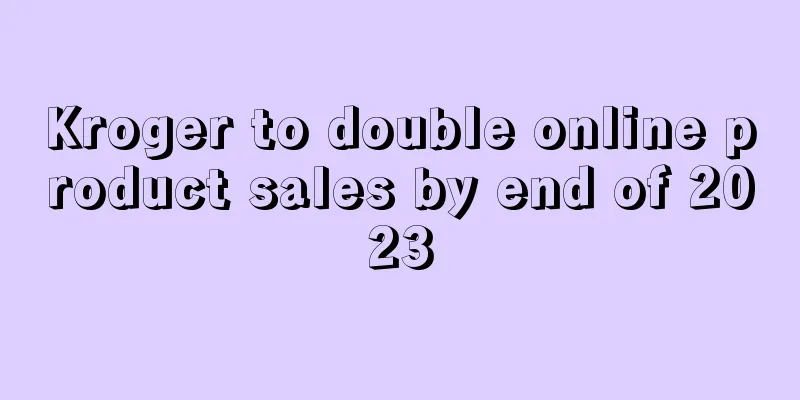What is a hot item? Hot item Review, Features

|
Hot-selling products refer to products that are very popular and have high sales volume. They are widely used in online stores and physical stores. Here they mainly refer to Amazon hot-selling products.
Purpose Creating a hit product can help you manage your company leanly, enhance your brand, strengthen customer stickiness to the brand, reduce procurement costs, increase profits, and so on.
Advantages 1. Improve the growth rate of sales performance; 2. Improve the conversion rate of similar products; 3. Increase the repeat purchase rate of goods; 4. Enhance customer stickiness to the brand; 5. Increase more fans to collect and follow; 6. Improve the ranking of stores on the platform.
Ideas for creating hit products 1. Product selection: Select product lines based on the company's own advantages (do not cross categories too much); 2. Capacity: The capacity here can be understood as the necessity of competition among similar products; 3. Resources: Investigate the domestic supply chain, the selected categories, and where the production resources are mainly distributed; 4. Price: You can expand the scope and find more manufacturers to cooperate with; 5. Service: Good products also need to be built on a strong service system (pre-sales and after-sales).
Hot sales route 1. Red Sea Route Products that have already been formed and are highly competitive have the following characteristics: 1. Product controllability (color, style, size selection, infringement); 2. Price controllability (suppliers can be changed at will, online or offline simultaneously); 3. Logistics controllability (you can change the product line at will according to whether it is powered, liquid, cutting tools, etc., and cooperate with logistics providers with good prices and channels); 4. Inventory controllability (there are many suppliers to choose from, and inventory measurement can be prepared by region, product volume, and price). 2. Blue Ocean Route Most of them are based on independent development. There are many factors to consider in this route: 1. Product confidentiality: internal members of the company, external members, including manufacturers and logistics providers; 2. The initial investment costs of the product: what is the minimum order quantity and how much inventory should be prepared; 3. At what levels are the consumer groups concentrated: Each product has a fixed consumer group, and relevant data needs to be well researched and analyzed before the product is put into sale; 4. Consumer demand index: Private model products are improvements and research and development based on the original functions, so the demand index of the same type of products also needs to be clearly investigated, whether it is high or low. Hot-selling product selection criteria 1. Product size Product Width Basic requirements: less than 18 feet (45.72 cm); Quality requirements: less than 15 feet (38.1 cm). Product Weight Basic requirements: Lighter than 5 pounds (2.26 kg); Premium requirements: Lighter than 3 pounds (1.36 kg). The size and weight of the product will directly affect inventory costs and logistics transportation. For the same product, the size will also affect the customer's experience. Therefore, the right product size is very important for creating a hit product. 2. Product Pricing Basic requirements: $15-100; Boutique requirements: $20-75. Any product that costs more than $50 is not within the customer's "impulse purchase range." Perhaps higher profits can make up for the lack of sales volume, but this is only limited to a certain range. 3. Product minefields Avoid products that are subject to seasonal fluctuations and can only be sold in a specific season. For example, Easter eggs can only be sold in spring and Christmas trees can only be sold in winter. Products that can be sold stably throughout the year can not only reduce business risks, but also provide more data feedback to facilitate sellers to make relevant adjustments. Avoid products with a production process that is too complicated or takes too long . Once you receive a large order for these categories, it means production pressure to deliver on time and the risk of transportation damage. In addition, the number of refunds and exchanges for these categories is also higher than that of general categories. 4. Product highlights Niche products. When conducting product selection research, sellers may wish to consider niche markets that are not yet saturated, which means weaker market competition, a fixed demand audience, and stable market profits. User pain points. When selecting products, sellers must pay attention to whether the product solves the customer's pain points. Especially when screening similar products, the design or changes of some product details may solve a customer's pain point, thereby gaining the customer's love and purchase. |
<<: What is EPC(Export Process Center)? EPC(Export Process Center) Review, Features
>>: What is EU Trademark? EU Trademark Review, Features
Recommend
What is Amazon Business? Amazon Business Review, Features
Amazon Business is a one-stop commercial purchasi...
From earning 700 million yuan a year to earning 17 million yuan a year, the cross-border big brother is in debt of 2.5 billion yuan!
Delisting risk warnings, sale of high-profit subs...
Crazy delivery! Yantian Port was paralyzed, and sellers queued for 4 days but failed to enter the warehouse
The eve of the Spring Festival is a traditional p...
What is 6PM? 6PM Review, Features
6PM is an American online retail store and a sub-...
eBay updates account bad transaction management policy, seller center policy section is upgraded simultaneously
Today, eBay released a new announcement in its Se...
More than 20,000 products were recalled, targeting Made in China!
In modern life, product quality and safety are in...
What is CBD-cannabidiol? CBD-cannabidiol Review, Features
cbd-cannabidiol is a cannabis oil website specifi...
Newegg announces expansion of same-day delivery
Newegg announced on September 2 that it will offe...
Involving more than 67 million yuan, 5 people on a cross-border e-commerce platform were prosecuted for suspected smuggling
It is reported that these people forged documents...
What is Amazon Currency Converter for Sellers? Amazon Currency Converter for Sellers Review, Features
Amazon Currency Converter is an optional service ...
What is Beluga Int'l? Beluga Int'l Review, Features
White Whale International is composed of more tha...
What is Bizbilla? Bizbilla Review, Features
Bizbilla is an India-based B2B marketplace that h...
What is Yiwu Pay? Yiwu Pay Review, Features
Yiwu Pay was founded in 2012. It is a licensed th...
What is RRS? RRS Review, Features
Founded in 2000, Gooday Logistics is committed to ...
What is Huonei.com & Huonei.com Review: Features, Pros & Cons, and Best Use Cases
Huoner.com is affiliated to Shanghai Huoner Netwo...









